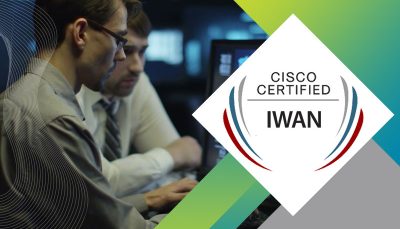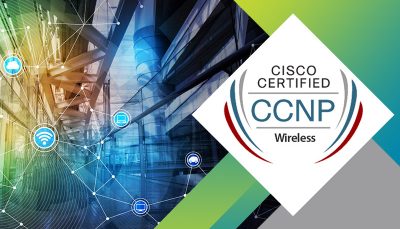
دوره Linux LPIC-3-303 Security
*رمزنگاری
*کنترل دسترسی
*امنیت برنامه
*امنیت عملیات
*امنیت شبکه
این دوره گواهی پایان دوره اختصاصی خود را با عنوان LPIC3-Security دارا می باشد.
پیش نیاز دوره
Linux LPIC-2
مخاطبین دوره Linux LPIC-3-303 Security
-
کارشناسان سیستم عامل لینوکس
-
علاقمندان به دریافت مدرک LPIC-3
- کارشناسان و مدیران ارشد شبکه های لینوکسی
- کارشناسان امنیت شبکه های لینوکسی
- میدران امنیت سیستم های لینوکسی
مزایای دوره Linux LPIC-3-303 Security
- ارائه مدرک معتبر
- برگزاری دوره ها بصورت کاملا عملی
- استفاده از لابراتور مجهز
- استفاده از برترین اساتید داخلی و با مدرک بین المللی
- با توجه به حضور گروه دوران در بیش از 1000 پروژه سازمانی، امکان معرفی دانشجویان دوره به بازار کار مرتبط به دوره ها
- تخفیف جهت حضور در دوره های بعدی
- دريافت مدرک بين المللی مرتبط
Linux LPIC-3-303 Security سرفصل دوره
1. رمز نگاری :
- رمز نگاری با استفاده از Openssl
- تولید certificate و Key
- تست های SSL/TLS بر روی سرویس دهنده و سرویس گیرنده
- آشنایی با SSL, Openssl X509, CSR, RSA, و DSA
- رمزنگاری با GPG
- مدیریت و تنظیمات GPG رمز نگاری فایل سیستم ها
- آشنایی با LUKS dm-crypt, cryptmount و cryptsetup
۲- کنترل سطوح دسترسی:
- تنظیمات مربوط به سیستم PAM و nsswitch
- بررسی لیست های دسترسی و کلاس های مربوطه
- آشنایی با Selinux ، تنظیم و کنترل و بکارگیری آن از طریق خط فرمان
- آشنایی با SMACK و AppArmor
۳- امنیت سرویس ها:
- ایمن سازی BIND/DNS
- بررسی محیط chroot
- آشنایی با TSIG
- کار با لیست های دسترسی در BIND و اشنایی با named-checkconf
- ایمن سازی سرویس Mail
- تنظیمات postfix و sendmail
- بررسی محیط chroot
- بکارگیری سیستم ایمیل بر روی TLS
- ایمن سازی Apache/HTTP/HTTPS
- تنظیم وب سرور
- بکارگیری SSL htaccess, Basic Authentication, htpasswd و AllowOverride
- ایمن سازی سرویس ftp
- تنظیمات Pure-ftpd و vsftpd
- ارسال اطلاعات ftp بر روی SSL/TLS
- ایمن سازی OpenSSH
- بررسی دستورات و پیکربندی OpenSSH
- بکارگیری ssh-keygen و ssh-agent
- ایمن سازی NFSV4
- بررسی ویژگی های امنیتی ارتقا یافته در NFSV4 و مکانیزم های امنیتی آن
- گرفتن لاگ از سیستم با Syslog
۴- امنیت شبکه:
- تشخیص نفوذ
- تنظیم و بکارگیری snort و Tripwire
- ابزارهای اسکن امنیت شبکه
- بررسی ابزارهای nmap, wireshark, tshark و nessus
- بررسی ابزارهای مانیتورینگ شبکه از جمله ntop و nagios
- پیکربندی netfilter/iptables
- پیکربندی OpenVpn
Topic 325: Cryptography
325.1 X.509 Certificates and Public Key Infrastructures
Weight: 5
Description: Candidates should understand X.509 certificates and public key infrastructures. They should know how to configure and use OpenSSL to implement certification authorities and issue SSL certificates for various purposes.
Key Knowledge Areas:
Understand X.509 certificates, X.509 certificate lifecycle, X.509 certificate fields and X.509v3 certificate extensions
Understand trust chains and public key infrastructures
Generate and manage public and private keys
Create, operate and secure a certification authority
Request, sign and manage server and client certificates
Revoke certificates and certification authorities
The following is a partial list of the used files, terms and utilities:
openssl, including relevant subcommands
OpenSSL configuration
PEM, DER, PKCS
CSR
CRL
OCSP
325.2 X.509 Certificates for Encryption, Signing and Authentication
Weight: 4
Description: Candidates should know how to use X.509 certificates for both server and client authentication. Candidates should be able to implement user and server authentication for Apache HTTPD. The version of Apache HTTPD covered is 2.4 or higher.
Key Knowledge Areas:
Understand SSL, TLS and protocol versions
Understand common transport layer security threats, for example Man-in-the-Middle
Configure Apache HTTPD with mod_ssl to provide HTTPS service, including SNI and HSTS
Configure Apache HTTPD with mod_ssl to authenticate users using certificates
Configure Apache HTTPD with mod_ssl to provide OCSP stapling
Use OpenSSL for SSL/TLS client and server tests
Terms and Utilities:
Intermediate certification authorities
Cipher configuration (no cipher-specific knowledge)
httpd.conf
mod_ssl
openssl
325.3 Encrypted File Systems
Weight: 3
Description: Candidates should be able to setup and configure encrypted file systems.
Key Knowledge Areas:
Understand block device and file system encryption
Use dm-crypt with LUKS to encrypt block devices
Use eCryptfs to encrypt file systems, including home directories and
PAM integration
Be aware of plain dm-crypt and EncFS
Terms and Utilities:
cryptsetup
cryptmount
/etc/crypttab
ecryptfsd
ecryptfs-* commands
mount.ecryptfs, umount.ecryptfs
pam_ecryptfs
325.4 DNS and Cryptography
Weight: 5
Description: Candidates should have experience and knowledge of cryptography in the context of DNS and its implementation using BIND. The version of BIND covered is 9.7 or higher.
Key Knowledge Areas:
Understanding of DNSSEC and DANE
Configure and troubleshoot BIND as an authoritative name server serving DNSSEC secured zones
Configure BIND as an recursive name server that performs DNSSEC validation on behalf of its clients
Key Signing Key, Zone Signing Key, Key Tag
Key generation, key storage, key management and key rollover
Maintenance and re-signing of zones
Use DANE to publish X.509 certificate information in DNS
Use TSIG for secure communication with BIND
Terms and Utilities:
DNS, EDNS, Zones, Resource Records
DNS resource records: DS, DNSKEY, RRSIG, NSEC, NSEC3, NSEC3PARAM, TLSA
DO-Bit, AD-Bit
TSIG
named.conf
dnssec-keygen
dnssec-signzone
dnssec-settime
dnssec-dsfromkey
rndc
dig
delv
openssl
Topic 326: Host Security
326.1 Host Hardening
Weight: 3
Description: Candidates should be able to secure computers running Linux against common threats. This includes kernel and software configuration.
Key Knowledge Areas:
Configure BIOS and boot loader (GRUB 2) security
Disable useless software and services
Use sysctl for security related kernel configuration, particularly ASLR, Exec-Shield and IP / ICMP configuration
Exec-Shield and IP / ICMP configuration
Limit resource usage
Work with chroot environments
Drop unnecessary capabilities
Be aware of the security advantages of virtualization
Terms and Utilities:
grub.cfg
chkconfig, systemctl
ulimit
/etc/security/limits.conf
pam_limits.so
chroot
sysctl
/etc/sysctl.conf
326.2 Host Intrusion Detection
Weight: 4
Description: Candidates should be familiar with the use and configuration of common host intrusion detection software. This includes updates and maintenance as well as automated host scans.
Key Knowledge Areas:
Use and configure the Linux Audit system
Use chkrootkit
Use and configure rkhunter, including updates
Use Linux Malware Detect
Automate host scans using cron
Configure and use AIDE, including rule management
Be aware of OpenSCAP
Terms and Utilities:
auditd
auditctl
ausearch, aureport
auditd.conf
auditd.rules
pam_tty_audit.so
chkrootkit
rkhunter
/etc/rkhunter.conf
maldet
conf.maldet
aide
/etc/aide/aide.conf
326.3 User Management and Authentication
Weight: 5
Description: Candidates should be familiar with management and authentication of user accounts. This includes configuration and use of NSS, PAM, SSSD and Kerberos for both local and remote directories and authentication mechanisms as well as enforcing a password policy.
Key Knowledge Areas:
Understand and configure NSS
Understand and configure PAM
Enforce password complexity policies and periodic password changes
Lock accounts automatically after failed login attempts
Configure and use SSSD
Configure NSS and PAM for use with SSSD
Configure SSSD authentication against Active Directory, IPA, LDAP, Kerberos and local domains
Kerberos and local domains
Obtain and manage Kerberos tickets
Terms and Utilities:
nsswitch.conf
/etc/login.defs
pam_cracklib.so
chage
pam_tally.so, pam_tally2.so
faillog
pam_sss.so
sssd
sssd.conf
sss_* commands
krb5.conf
kinit, klist, kdestroy
326.4 FreeIPA Installation and Samba Integration
Weight: 4
Description: Candidates should be familiar with FreeIPA v4.x. This includes installation and maintenance of a server instance with a FreeIPA domain as well as integration of FreeIPA with Active Directory.
Key Knowledge Areas:
Understand FreeIPA, including its architecture and components
Understand system and configuration prerequisites for installing FreeIPA
Install and manage a FreeIPA server and domain
Understand and configure Active Directory replication and Kerberos cross-realm trusts
Be aware of sudo, autofs, SSH and SELinux integration in FreeIPA
Terms and Utilities:
389 Directory Server, MIT Kerberos, Dogtag Certificate System, NTP, DNS, SSSD, certmonger
ipa, including relevant subcommands
ipa-server-install, ipa-client-install, ipa-replica-install
ipa-replica-prepare, ipa-replica-manage
Topic 327: Access Control
327.1 Discretionary Access Control
Weight: 3
Description: Candidates are required to understand Discretionary Access Control and know how to implement it using Access Control Lists. Additionally, candidates are required to understand and know how to use Extended Attributes.
Key Knowledge Areas:
Understand and manage file ownership and permissions, including SUID and SGID
Understand and manage access control lists
Understand and manage extended attributes and attribute classes
Terms and Utilities:
getfacl
setfacl
getfattr
setfattr
327.2 Mandatory Access Control
Weight: 4
Description: Candidates should be familiar with Mandatory Access Control systems for Linux. Specifically, candidates should have a thorough knowledge of SELinux. Also, candidates should be aware of other Mandatory Access Control systems for Linux. This includes major features of these systems but not configuration and use.
Key Knowledge Areas:
Understand the concepts of TE, RBAC, MAC and DAC
Configure, manage and use SELinux
Be aware of AppArmor and Smack
Terms and Utilities:
getenforce, setenforce, selinuxenabled
getsebool, setsebool, togglesebool
fixfiles, restorecon, setfiles
newrole, runcon
semanage
sestatus, seinfo
apol
seaudit, seaudit-report, audit2why, audit2allow
/etc/selinux/*
327.3 Network File Systems
Weight: 3
Description: Candidates should have experience and knowledge of security issues in use and configuration of NFSv4 clients and servers as well as CIFS client services. Earlier versions of NFS are not required knowledge.
Key Knowledge Areas:
Understand NFSv4 security issues and improvements
Configure NFSv4 server and clients
Understand and configure NFSv4 authentication mechanisms (LIPKEY, SPKM, Kerberos)
Understand and use NFSv4 pseudo file system
Understand and use NFSv4 ACLs
Configure CIFS clients
Understand and use CIFS Unix Extensions
Understand and configure CIFS security modes (NTLM, Kerberos)
Understand and manage mapping and handling of CIFS ACLs and SIDs in a Linux system
Terms and Utilities:
/etc/exports
/etc/idmap.conf
nfs4acl
mount.cifs parameters related to ownership, permissions and security modes
winbind
getcifsacl, setcifsacl
Topic 328: Network Security
328.1 Network Hardening
Weight: 4
Description: Candidates should be able to secure networks against common threats. This includes verification of the effectiveness of security measures.
Key Knowledge Areas:
Configure FreeRADIUS to authenticate network nodes
Use nmap to scan networks and hosts, including different scan methods
Use Wireshark to analyze network traffic, including filters and statistics
Identify and deal with rogue router advertisements and DHCP messages
Terms and Utilities:
radiusd
radmin
radtest, radclient
radlast, radwho
radiusd.conf
/etc/raddb/*
nmap
wireshark
tshark
tcpdump
ndpmon
328.2 Network Intrusion Detection
Weight: 4
Description: Candidates should be familiar with the use and configuration of network security scanning, network monitoring and network intrusion detection software. This includes updating and maintaining the security scanners.
Key Knowledge Areas:
Implement bandwidth usage monitoring
Configure and use Snort, including rule management
Configure and use OpenVAS, including NASL
Terms and Utilities:
ntop
Cacti
snort
snort-stat
/etc/snort/*
openvas-adduser, openvas-rmuser
openvas-nvt-sync
openvassd
openvas-mkcert
/etc/openvas/*
328.3 Packet Filtering
Weight: 5
Description: Candidates should be familiar with the use and configuration of packet filters. This includes netfilter, iptables and ip6tables as well as basic knowledge of nftables, nft and ebtables.
Key Knowledge Areas:
Understand common firewall architectures, including DMZ
Understand and use netfilter, iptables and ip6tables, including standard modules, tests and targets
Implement packet filtering for both IPv4 and IPv6
Implement connection tracking and network address translation
Define IP sets and use them in netfilter rules
Have basic knowledge of nftables and nft
Have basic knowledge of ebtables
Be aware of conntrackd
Terms and Utilities:
iptables
ip6tables
iptables-save, iptables-restore
ip6tables-save, ip6tables-restore
ipset
nft
ebtables
328.4 Virtual Private Networks
Weight: 4
Description: Candidates should be familiar with the use of OpenVPN and IPsec.
Key Knowledge Areas:
Configure and operate OpenVPN server and clients for both bridged and routed VPN networks
Configure and operate IPsec server and clients for routed VPN networks using IPsec-Tools / racoon
Awareness of L2TP
Terms and Utilities:
دوران آکادمی زیر مجموعه گروه دوران، مجری برگزاری دوره Linux LPIC-3-303 Security در قالب آموزش شبکه به صورت آموزش آنلاین و حضوری با بهره گیری از لابراتور آنلاین اختصاصی بهمراه گواهی معتبر ارائه میشود. این دوره یکی از زیرمجموعه های دوره Linux بشمار می آید.
درخواست مشاوره
برای کسب اطلاعات بیشتر درباره این دوره درخواست مشاوره خود را ارسال کنید و یا با ما در تماس باشید.
درخواست مشاورهدوره های مرتبط
دوره آموزش Cisco CCNA Security
دوره آموزش Cisco CCNA Security برای افرادی طراحی شده است که میخواهند در زمینه امنیت شبکه تخصص پیدا کنند و توانایی محافظت از زیرساختهای شبکه را کسب کنند. این دوره شما را با اصول امنیت شبکه، طراحی و پیادهسازی راهحلهای امنیتی آشنا میکند و دانش و مهارتهای لازم برای مدیریت و پیکربندی تجهیزات امنیتی Cisco مانند فایروالها، سیستمهای پیشگیری از نفوذ (IPS) و تکنولوژیهای VPN را به شما میآموزد. مدرک CCNA Security یکی از معتبرترین مدارک بینالمللی در حوزه امنیت شبکه است.
دوره آموزش Cisco IWAN
دوره آموزش Cisco Intelligent WAN (IWAN) به شما کمک میکند تا با فناوریهای WAN هوشمند Cisco آشنا شوید و مهارتهای لازم برای طراحی، پیادهسازی و مدیریت شبکههای WAN را کسب کنید.
دوره آموزش Cisco CCNP wireless
این دوره در دوران آکادمی با لابراتور مجهز و با سنارایو های کاربردی توسط اساتید برتر حوزه مجازی تدریس می شود
دوره آموزش Nexus 1000v Series Switch
این دوره در دوران آکادمی با لابراتور مجهز و با سنارایو های کاربردی توسط اساتید برتر حوزه مجازی تدریس می شود
نظرات
تماس با ما




